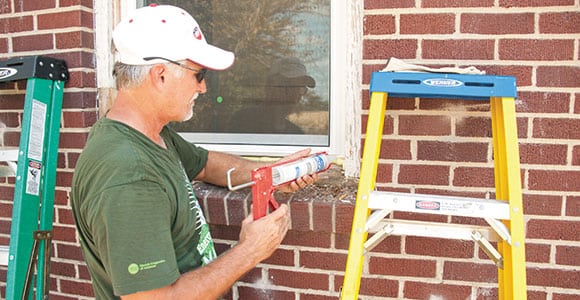Investing in energy-efficient measures for your home is a good plan in the long run, but the reality of some co-op members’ lives is that they simply have very little or even no money to undertake such changes. But there are still no-cost and low-cost actions you can take to start whittling away at those monthly energy bills.
“Air-sealing with caulk, weather stripping and other appropriate materials is a fundamental step in making your home more energy-efficient,” says Frank Rapley, senior manager of the Tennessee Valley Authority’s EnergyRight Solutions for Homes program. “Individual gaps may appear minor but collectively can add up to major issues. Proper air-sealing of gaps in the attic, crawlspace and other breaks in the thermal boundary can help homeowners save 10 percent or more on their energy bills.”
Rapley says that in a price-sensitive situation, homeowners can embrace the low-cost or no-cost options (to the right) to make the home more efficient.
Energy Saving Checklist
No-cost measures
- In winter, turn down your heating system thermostat to 68 degrees.
- Lower your water heater temperature to 120 degrees, and reduce hot water use by taking shorter showers and using cold water for laundry whenever possible.
- Turn off lights, TVs and computers when not in use.
- Remove and recycle a second refrigerator.
- Clean refrigerator coils and set the temperature between 36 and 39 degrees and the freezer at 0 to 5 degrees.
- Make sure the fireplace damper is closed when not in use.
- Match the size of your pot or pan to the size of the stove burner, and cover pots and pans with lids when cooking.
- Once a year, drain about 1 gallon of water from your water heater to remove sediment.
- Air-dry dishes instead of using the dishwasher’s heat-drying option.
Low-cost options
- Caulk and weather strip around windows and doors to stop air leaks. Seal any gaps in floors and walls around pipes and electrical wiring.
- Change filters monthly. Install a “filter whistle” to let you know when to change them.
- Replace incandescent lightbulbs with compact fluorescent bulbs.
- Repair air leaks and seal and insulate heating system ductwork.
- Add insulation to your attic, crawlspace and any accessible exterior walls. Add pipe insulation to the first 5 feet of water pipe coming from your water heater. Install light switch and electrical outlet seals on exterior walls.
- Install an ENERGY STAR-rated programmable thermostat appropriate for your type of heating system, and set it at 68 degrees for heating.
- Look for the ENERGY STAR label when replacing large or small appliances.
- Wrap your water heater with insulation or install an insulating blanket.
- Install aerating, low-flow faucets and showerheads, and repair leaky faucets.
- Use power strips for home electronics, and turn off power strips when equipment is not in use. Electronics like TVs and DVD players still use power when they’re switched off.



